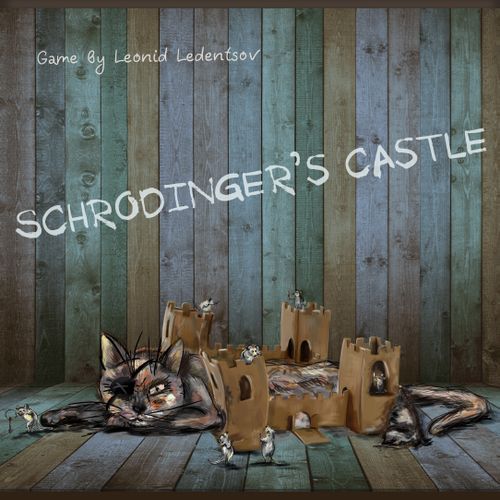|
Advertisement
|
Schrödinger's Castle

DescriptionThis game combines scientific and adventurous aspects. The game idea is based on the famous thought experiment formulated by the Austrian theoretical physicist Erwin Schrödinger. The experiment describes a cat that turns out to be both alive and dead due to circumstances and formalism of quantum mechanics. This unusual state makes the Schrödinger's cat widely popular in contemporary mainstream culture. The goal of the game is to save the Schrödinger's cat from inhumane experiments. Notwithstanding the long and complicated story of the cat, the basic rules are simple enough to understand by every person, even if he or she is unfamiliar with the paradox of the Schrödinger's cat. Nonetheless, science enthusiasts will definitely notice that the rules contain multiple allusions to the quantum mechanical world view. The game is represented as a labyrinth with the changing structure - the Schrödinger's castle. The winner is the player who managed to find the Schrodinger's cat in the labyrinth and led it to his starting point. The distinctive feature of the game is that all players can build and change the structure of the labyrinth the way they want. Specially elaborated system of action cards used on each player's turn is also of interest. Despite the randomness factor during a turn, it allows players to develop a unique long-term strategy. The labyrinth consists of 19 wooden hexagonal elements - the halls of Schrödinger's castle. The halls contain passageways connecting their different sides. At the beginning of the game, all halls are turned upside down and are not visible to players. During his turn, each player can move around the castle, gradually opening the halls and joining the passages as it suits him. However, as soon as a player leaves any hall, this hall is turned over, and the next player who comes to this hall will be able to open it in a convenient way. The turns are made by playing action cards (3 cards per turn). These cards allow you to move around the castle, prevent the empty halls from closing, rotate open halls and rearrange closed ones, open locked doors, and arrange baits for Schrödinger's cat. At the end of the turn, the player collects up to 3 new cards. The game does not contain direct conflict between players, all interactions take place through the restructuring of a common labyrinth. Victory conditions depend on whether Schrödinger's cat is alive or dead, this is also decided by the players during the game. The game has a colourful minimalistic design. The game board is made of embossed wooden elements. Game elements do not contain any text - all the necessary information is contained in the form of images. The combination of simple rules and richness of game situations resembles chess, however, unlike the latter, the game contains a significant role of chance in the gameplay. -description from designer Game DiscussionsAdd CommentYou need to be logged in to comment. Insert Bullet List Please enter at least one item. Item: Item: Item: Item: Item: Insert Numeric List Please enter at least one item. Item: Item: Item: Item: Item: Insert Link Please enter the link of the website Optionally you can add display text Insert Email Please enter the email address Optionally add any display text Insert Image Please enter the link of the image Insert YouTube Video Please enter the link of the video Marketplace | ||||

Comments (0)